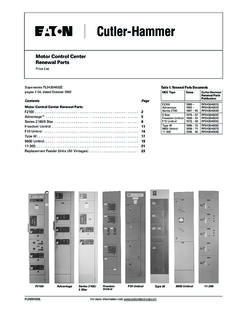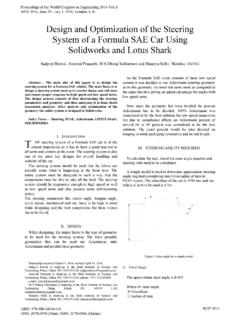Transcription of Guidance for Industry - Pharmanet
1 X:\CDERGUID\ for IndustrySkin Irritation and SensitizationTesting of GenericTransdermal Drug ProductsDRAFT GUIDANCEThis Guidance document is being distributed for comment purposes and suggestions regarding this draft document should be submitted within 60 days ofpublication of the Federal Register notice announcing the availability of the draft Guidance . Submit comments to Dockets Management Branch (HFA-305), Food and Drug Administration,5630 Fishers Lane, rm. 1061, Rockville, MD 20852. All comments should be identified with thedocket number listed in the notice of availability that publishes in the Federal questions on the content of the draft document contact Mary Fanning, 301-827-5845.
2 Department of Health and Human ServicesFood and Drug AdministrationCenter for Drug Evaluation and Research (CDER)February 1999 OGD #X:\CDERGUID\ for IndustrySkin Irritation and SensitizationTesting of GenericTransdermal Drug ProductsAdditional copies are available from:the Drug Information Branch (HFD-210),Center for Drug Evaluation and Research (CDER),5600 Fishers Lane, Rockville, MD 20857, (Tel) 301-827-4573 Internet at Department of Health and Human ServicesFood and Drug AdministrationCenter for Drug Evaluation and Research (CDER)February 1999 OGD #X:\CDERGUID\ OF for a Cumulative Skin Irritation for a Skin Sensitization Study (Modified DraizeTest).
3 B ..6 Draft - Not for Implementation This Guidance has been prepared by the Office of Generic Drugs in conjunction with the Division of1 Dermatological and Dental Drug Products in the Center for Drug Evaluation and Research (CDER) at the Food andDrug Administration. This Guidance document represents the Agency s current thinking on studies to assess skinirritation and sensitization of proposed generic transdermal drug products. It does not create or confer any rights for oron any person and does not operate to bind FDA or the public. An alternative approach may be used if such approachsatisfies the requirements of the applicable statute, regulations, or both.
4 This Guidance does not address the bioequivalence studies that would be needed for a particular transdermal2drug product. These will vary according to the active ingredient in the product. The Office of Generic Drugs (OGD)should be contacted with questions regarding bioequivalence :\CDERGUID\ FOR INDUSTRY1 Skin Irritation and Sensitization Testing of GenericTransdermal Drug Guidance is intended to assist sponsors of abbreviated new drug applications (ANDAs) byrecommending study designs and scoring systems that can be used to test skin irritation andsensitization during development of transdermal products.
5 To fully evaluate the equivalence of a transdermal product for an ANDA to a reference listed drug(RLD), skin irritation and sensitization should be assessed because the condition of the skin mayaffect the absorption of a drug from a transdermal system. More severe skin irritation may affect2the efficacy or safety of the products have properties that may lead to skin irritation and/or sensitization. Thedelivery system, or the system in conjunction with the drug substance, may cause these reactions. In the development of transdermal products, dermatologic adverse events are evaluated primarilywith animal studies and safety evaluations in the context of large clinical trials generally associatedwith the submission of new drug applications (NDAs).
6 Separate skin irritation and skinsensitization studies also are used for this purpose. These latter studies are designed to detectirritation and sensitization under conditions of maximal stress and may be used during theassessment of transdermal drug products for ANDAs. DESIGNSR ecommended designs for skin irritation and skin sensitization studies for the comparativeDraft - Not for ImplementationX:\CDERGUID\ of transdermal drug products for an ANDA are delineated below. Other proposals forstudies may be suggested, but potential applicants are advised to consult the Office of GenericDrugs about alternative study designs prior to the initiation of such a for a Cumulative Skin Irritation size: 30 criteria: Dermatologic disease that might interfere with theevaluation of test site of study: 22 design: A randomized, controlled, repeat patch test study thatcompares the test patch to the innovator patch.
7 Placebo patches(transdermal patch without active drug substance) and/or high- and low-irritancy controls ( , sodium lauryl sulfate and saline) can beincluded as additional test application: Test sites should be randomized among patients. Patches should be applied for 23 hours (plus or minus 1 hour) daily for 21days to the same skin site. At each patch removal, the site should beevaluated for reaction and the patch of a test patch should be discontinued at a site if predefinedserious reactions occur at the site of repeated applications. Application ata different site may subsequently be : Scoring of skin reactions and patch adherence should beperformed by a trained and blinded observer at each patch removal, usingan appropriate reactions should be scored on a scale that describes the amount oferythema, edema, and other features indicative of irritations.
8 (SeeAppendix 1 for an example of a scoring system that can be used.) Thepercent adherence of the transdermal patches should be assessed using a 5-point scale (see Appendix B). presentation and analysis: Individual daily observations should beprovided, as well as a tabulation that presents the percentage of subjectswith each grade of skin reaction and degree of patch adherence on eachDraft - Not for ImplementationX:\CDERGUID\ day. The mean cumulative irritation score and the total cumulativeirritation score for all the study subjects should be calculated for each testproduct, and a statistical analysis of the comparative results should for a Skin Sensitization Study (Modified Draize Test) size: 200 criteria: Dermatologic disease that might interfere with theevaluation of the test site of study: 6 design: A randomized, controlled study on three test products: thetest transdermal patch, the innovator patch, and the placebo patch(transdermal patch without the active drug substance) application.
9 Test sites should be randomized among patients. Thestudy is divided into three sequential periods:!Induction Phase: Applications of the test materials should be madeto the same skin sites 3 times weekly for 3 weeks, for a total of 9applications. The patches should remain in place for 48 hours onweekdays, and for 72 hours on weekends. Scoring of skinreactions and patch adherence should be performed by a trained andblinded observer at each patch removal, using an appropriate reactions should be scored on a scale that describes theamount of erythema, edema, and other features indicative ofirritation.
10 (See Appendix 1 for an example of a scoring system thatcan be used.) The percent adherence of the transdermal patchesshould be assessed using a 5-point scale (see Appendix B).!Rest Phase: The induction phase is followed by a rest phase of 2weeks, during which no applications are made.!Challenge Phase: The patches should be applied to new skin sitesfor 48 hours. Evaluation of skin reactions should be made by atrained blinded observer at 30 minutes and at 24, 48, and 72 hoursafter patch removal. (See Appendix A for an example of a scoringDraft - Not for ImplementationX:\CDERGUID\ that can be used.) presentation and analysis: The individual daily observations should beprovided, as well as a tabulation of the percentage of subjects with eachgrade of skin reaction and degree of patch adherence on each study day.







